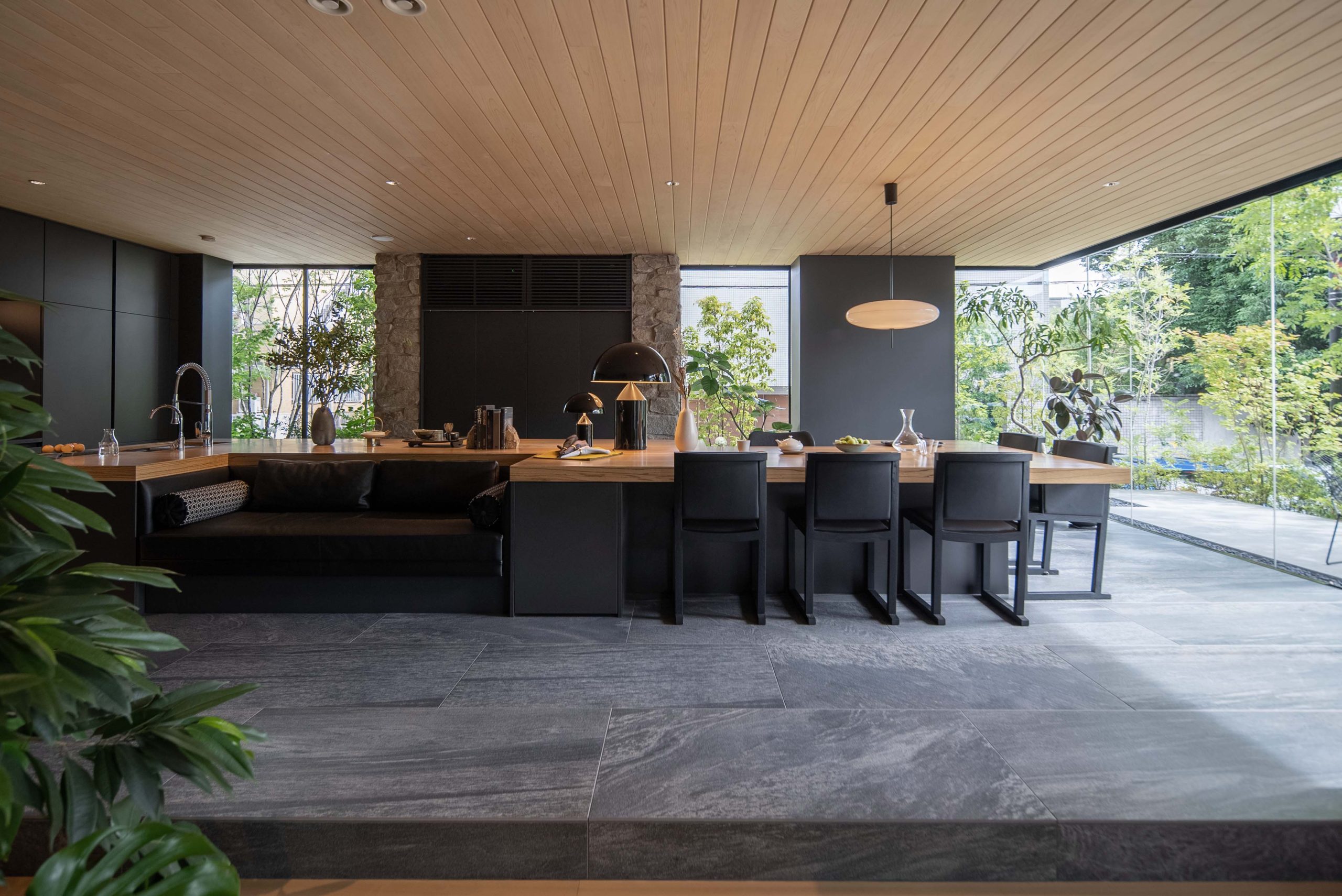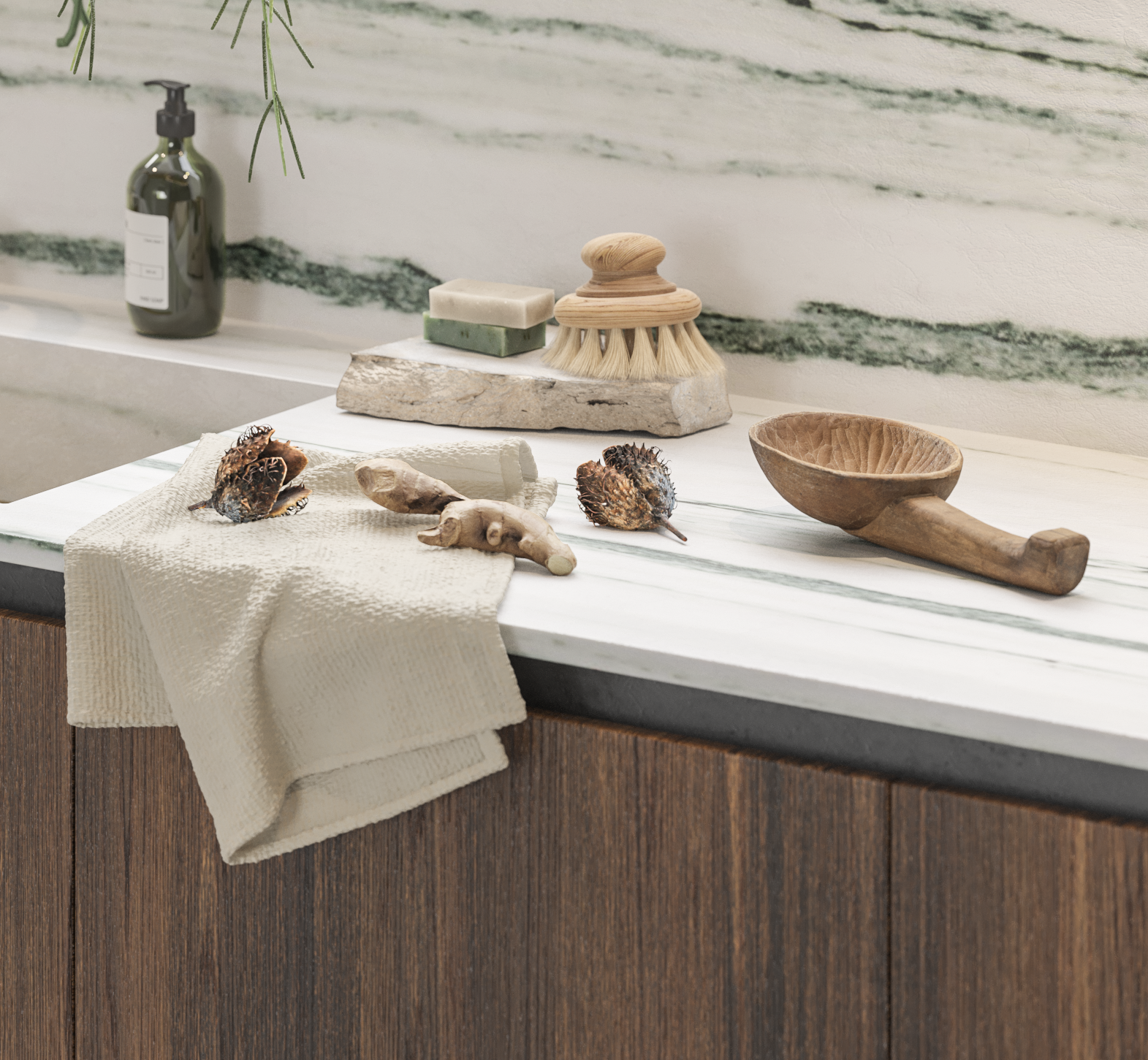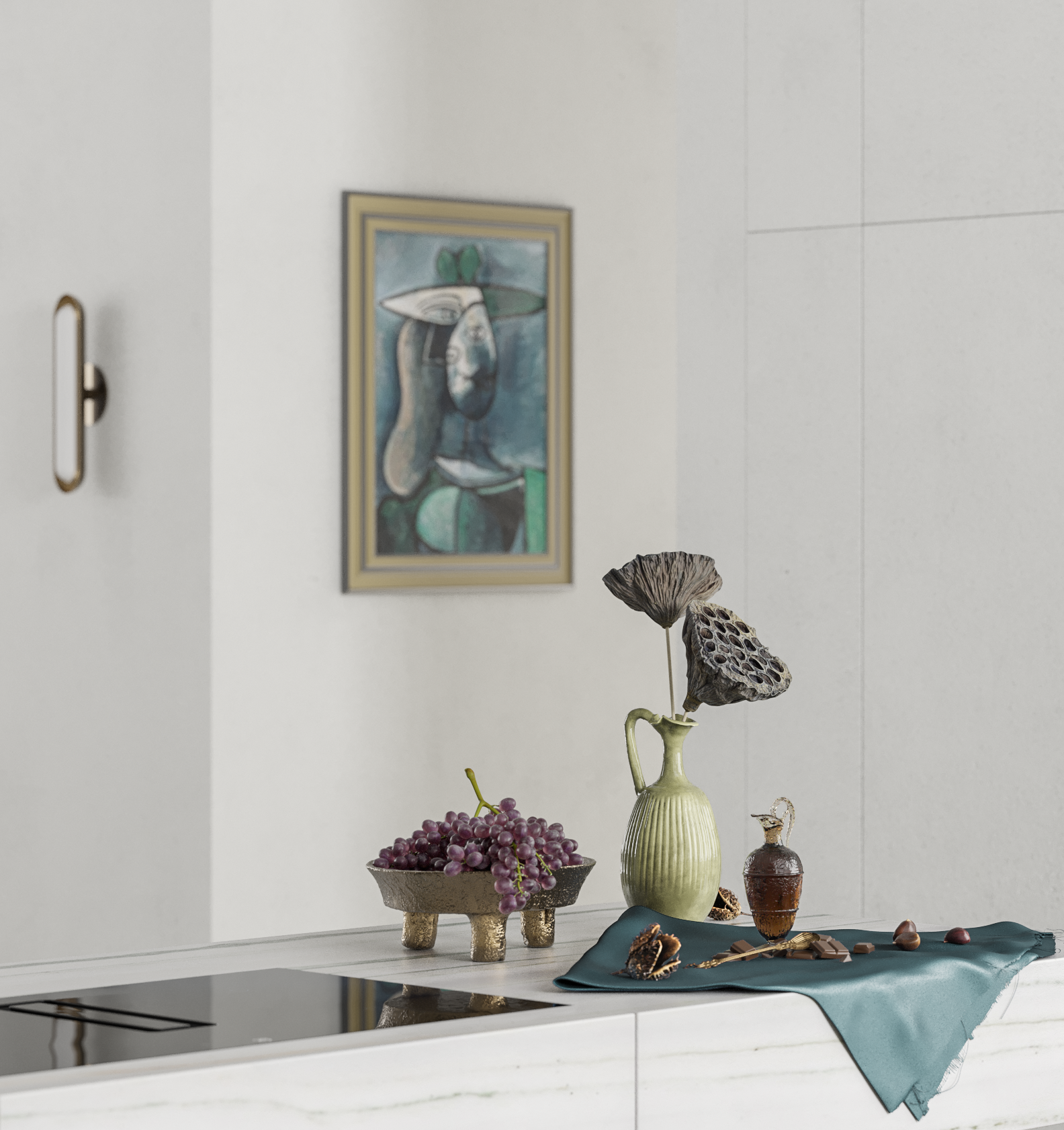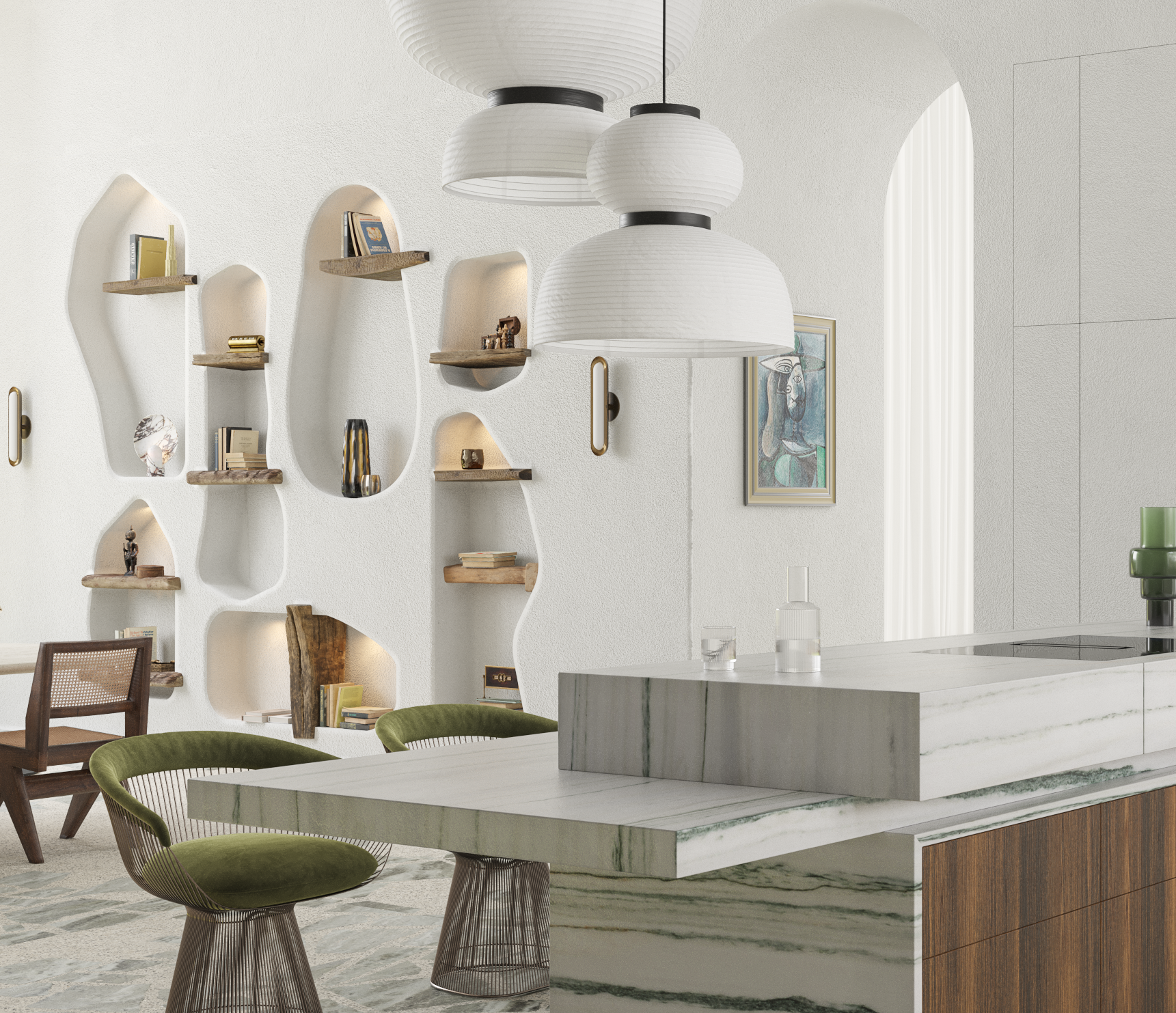
Amongst the design trends heralded as leading the way in 2024 interiors, wabi-sabi is emerging as a leading light. This is not merely a look, but a philosophy and perhaps our growing quest for meaning and connection is at the root of the surging interest in this Japanese approach to aesthetics, which has quietly existed for hundreds of years.
Style with substance
Wabi-sabi is not a new idea – its origins are linked with ancient Chinese Taoism and Zen Buddhism. Its evolution is much debated, with some prioritising a 16th-century Japanese legend about Sen no Rikyu and his tea master, Takeeno Joo, while others focus on the 15th-century and a Zen monk by the name of Murata Jukō.
Either way, the meaning of this philosophical approach concerns simplicity, tranquillity and naturalness, celebrating imperfection, impermanence and the beauty of the simple and authentic. It’s that mindset that has come to inspire and delight homeowners and interior designers, transforming the penchant for sleek, modern aesthetics into meaningful, evolving spaces with a life and spirit of their own, embraced through texture, touch and the luxury of fallibility.
The beauty of imperfection
This open mindset is made manifest in the home through the use of materials that have a character of their own and are most commonly natural. Woodwork that celebrates the grain and the knots of that one individual and never replicated tree; stone honed across the centuries for a single piece that will be produced once in all the millennia; clay nurtured by the careful hands of an artist or metalwork that develops its rich patina through daily use and exposure to the sunlight. This is the perfectly imperfect.
Seeing the beauty in these so-called imperfections adds soul and sensuousness to a home, as well as a depth that’s completely unique to your space, grounding those who live there in an oasis of their own making. With our growing awareness of health and wellbeing, particularly mental health, this organic approach to home environments is coming into its own at a timely moment – one where we not only like it, but need it.

Creating wabi-sabi at home
If you’re looking to embrace wabi-sabi at home, where do you start and what are the specific pillars you can put in place to create an environment that celebrates imperfection and natural beauty? These are some of the hallmarks that will set you on your journey.
Natural touch
Natural materials are the cornerstone of wabi-sabi. By embracing the organic textures of mediums like wood, stone and clay we enable spaces to come alive where man made fabrics and surfaces are frozen in time. Wooden surfaces, ageing metals and softened leather that bear the marks of their use become testaments to the beauty of ageing gracefully.
The art of handmade
The magic of handmade artwork embedded into the home is also something to celebrate. Handmade clay tiles with the hint of the artist’s fingerprints, asymmetrical edges and eschewing perfect uniformity, as well as artwork on canvas, linen, velvet, sculptures and handwoven rugs – they all add to the richness and warmth of a home. Even custom-built cabinets bring a touch of individuality and uniqueness that you will never find anywhere else, creating a space that feels personal and authentic.
Down to earth
Colour can be transformative in the home, and when it comes to wabi-sabi it’s no exception. Further evoking nature’s wonders, the colours associated with this style are calm, earthy and muted, inviting a sense of reflection and connection. It’s very much in line with the year’s other trend for low key luxury, browns from tan to walnut, greys, deep greens and rusty oranges all play their part in creating warmth and depth.

The art of life
We spend so much of our lives hiding its inner workings from view, but part of wabi-sabi is bringing the ritual of daily life to the fore. Open shelving replaces closed cabinets, showcasing everyday items from mismatched utensils and aged cookware to cherished heirlooms, all of which give a sense of the household’s personality, turning the kitchen in particular into a gallery that elevates functionality to an aesthetic feature.
Playing with space
One of the ways we are really excited about celebrating imperfection in the home is by embracing imperfect shapes and forms. That might be in the context of individual items or in the shape of the space itself. Particularly where heritage properties are concerned, using unique angles to create character within the home and to play with the unexpected is a powerful way to bring joy and authenticity into the environment. Rather than bemoan that a space is not the perfect shape, we can innovate with its individuality.
Minimalist balance
Wabi-sabi is not about minimalism, but it is about harmony. So, while celebrating the everyday and showcasing functionality can be an important part of it, there’s also a reverence for simplicity and a lack of clutter at the heart of the philosophy. The goal isn’t to hide or remove life’s paraphernalia, but to be intentional about it, removing unnecessary distractions to retain an environment that’s mindful and nurturing.

Natural connection
Nature is at the heart of wabi-sabi, bringing the outside in to foster a sense of connectivity with the earth and enhance tranquillity. We know that having plants in the home helps to improve air quality and even minimise e-smog created by all our electrical devices. They’re also profoundly beautiful to have around, giving us living entities to care for, observing their growth alongside our own.
Sentimental value
A lot of modern design seems to be about adhering to an Instagrammable aesthetic – mimicking an influencer as if to give the impression of who you want to be. While aspiration is a wonderful thing, it is not to undermine the beauty of who you are and the life experiences that have contributed to that. Having personal touches with sentimental value, items that hold beautiful memories and remind you of people you love is a hallmark of an authentic home. Items from holidays, pieces inherited from much loved friends and relatives, paintings by your children – these are all items that enrich a home and can be put on display. To someone else it might simply be a chair or a jewellery box, but if you can wander around your home and feel the presence of those you love – that’s a joy that money can’t buy.
Permission to be real
The wabi-sabi trend in home design is a celebration of life – a departure from the sterile and the impossibly perfect. It invites us to appreciate the beauty in what’s perceived to be flawed, to find elegance in simplicity, and to create spaces that tell the unique stories of those who inhabit them. In many ways it gives us permission to explore who we are through our stylistic expression, and perhaps not yet come to a conclusion. As we embrace the wabi-sabi philosophy in our kitchens, we rediscover the profound beauty that exists in the everyday and the extraordinary charm of imperfection.



